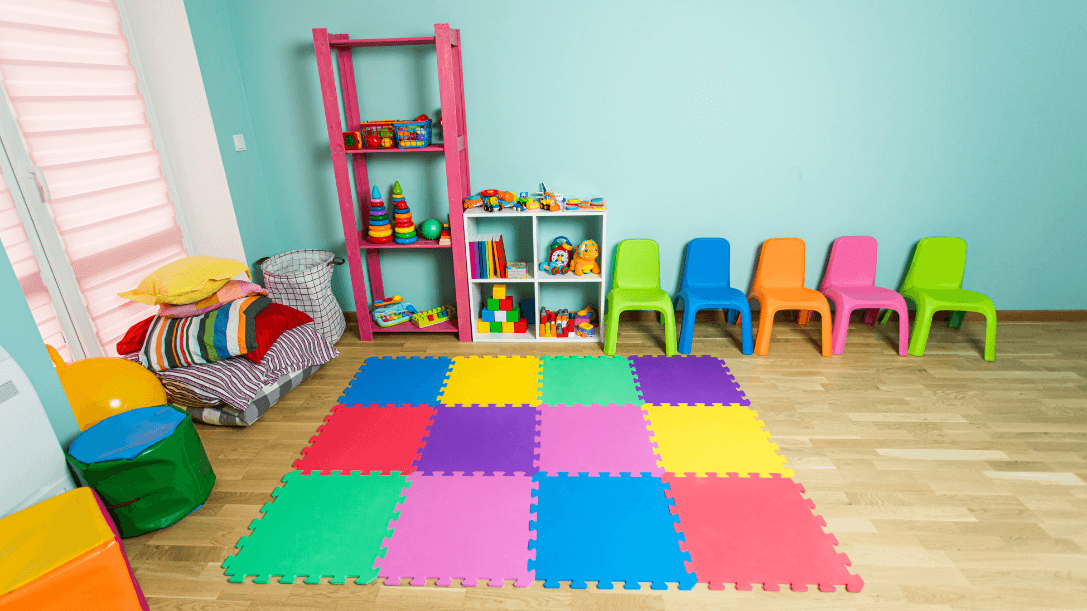How to create a safe and secure play area for your kid
Every parent knows the joy of watching their child explore the world through play. It’s a magical time filled with laughter, discovery, and imagination. But amidst the giggles, safety remains a top priority.
This is where creating a designated play area for your little one comes in – a space where they can unleash their creativity while keeping bumps and bruises at bay.
So, how do you transform a corner of your home or backyard into a safe haven for fun? Don’t worry, it’s easier than you think! This guide will walk you through all the essential steps to create an amazing play area that fosters fun and keeps your child secure.
Safety First
Location, Location, Location!
The first step is choosing the perfect spot for your play area. Here’s what to consider:
- Watch out for hazards: Avoid areas with potential dangers like swimming pools, sharp edges, or busy traffic zones.
- Sun and Shade: If it’s outdoors, ensure a balance of sun and shade. Shade sails or a large tree canopy are great options for protection from harsh sunlight.
- Indoor vs. Outdoor: Consider your lifestyle and available space. Indoor areas are ideal for rainy days, while outdoor spaces offer a connection with nature.
Boundaries are Key
Once you’ve chosen the location, securing the play area is crucial. Here are some effective methods:
- Fences and Gates: For outdoor spaces, a sturdy fence with a self-latching or self-closing gate keeps your child safely contained.
- Natural Barriers: Hedges or well-maintained shrubs can create a natural barrier. However, ensure they’re not poisonous and have no sharp thorns.
- Open Play Areas: If fencing isn’t an option, constant supervision is essential.
Flooring Matters
Falls are inevitable during playtime, especially for younger children. Here’s where the flooring plays a vital role:
- Importance of Cushioning: A soft surface helps absorb impact and minimize injuries. Aim for a depth of at least 6 inches for loose materials like sand or gravel.
- Safe Surface Options:
- Rubber mats: These come in various thicknesses and offer excellent shock absorption. Choose ones specifically designed for outdoor use if the play area is outside.
- Sandpits: Sand provides a soft landing and encourages imaginative play. However, regular maintenance is required to remove debris and prevent the sand from becoming a breeding ground for bacteria.
- Pea Gravel: This is another good option but ensure the gravel size is appropriate
for your child’s age (larger pebbles can be choking hazards for younger children).
Remember: Regularly inspect the chosen surface for wear and tear and replace it when necessary.
Playtime Essentials
Now comes the fun part – the toys and equipment! Safety remains paramount here:
- Age-appropriate Toys: Always choose toys that are appropriate for your child’s age and development stage. Look for certifications from reputable organizations to ensure compliance with safety standards.
- Choking Hazards: Be extra cautious with young children and avoid toys with small parts that can be choking hazards.
- Sharp Edges: Opt for smooth-edged toys to prevent cuts and scrapes.
- Regular Inspections: Develop a habit of regularly checking toys for loose parts, splinters, or broken pieces that could cause injury.
- Anchoring Climbing Structures: For equipment like climbers or swings, ensure they are securely anchored to prevent tipping accidents.
Keeping it Clean
Playtime can get messy, but keeping the play area clean is essential to prevent the spread of germs:
- Regular Cleaning: Schedule regular cleaning sessions to disinfect frequently touched surfaces like toys, swings, and slides. Use a mild disinfectant solution and rinse thoroughly with clean water.
- Sandpit Maintenance: For sandpits, remove debris like leaves and twigs regularly. Raking the sand helps with aeration and prevents moisture build-up.
- Handwashing Habits: Teach your child the importance of washing their hands after playtime to maintain good hygiene and prevent the spread of germs.
Bonus Section: Fun and Functional Play Area Ideas
Now that you have a safe and secure foundation, let’s add some fun! Here are some ideas to spark your creativity:
- Sensory Elements: Incorporate textures, sounds, and colors to stimulate your child’s senses. A soft rug for crawling babies, colorful building blocks, or wind chimes for a gentle melody are all great additions.
- Cozy Nooks: Create a dedicated space for quiet time. A small tent, a beanbag chair, or a pile of soft cushions can become a haven for reading or imaginative play.
- DIY Projects: Get crafty and involve your child in creating simple and safe DIY play area elements. This could be painting planters, building a cardboard fort, or decorating a play tent.
- Let Imagination Flourish: Most importantly, let your child’s imagination run wild! Leave plenty of space for open-ended play and avoid cluttering the area with too many toys.
Conclusion
Creating a safe and secure play area for your child is an investment in their well-being and your peace of mind. By following these simple steps, you can transform a space into a haven for exploration, laughter, and happy memories.
Remember, personalize the play area based on your child’s interests and age. Don’t be afraid to get creative and have fun with the process!
So, roll up your sleeves, unleash your inner child, and get ready to build a play area that sparks joy and fosters unforgettable moments for your little adventurer!
